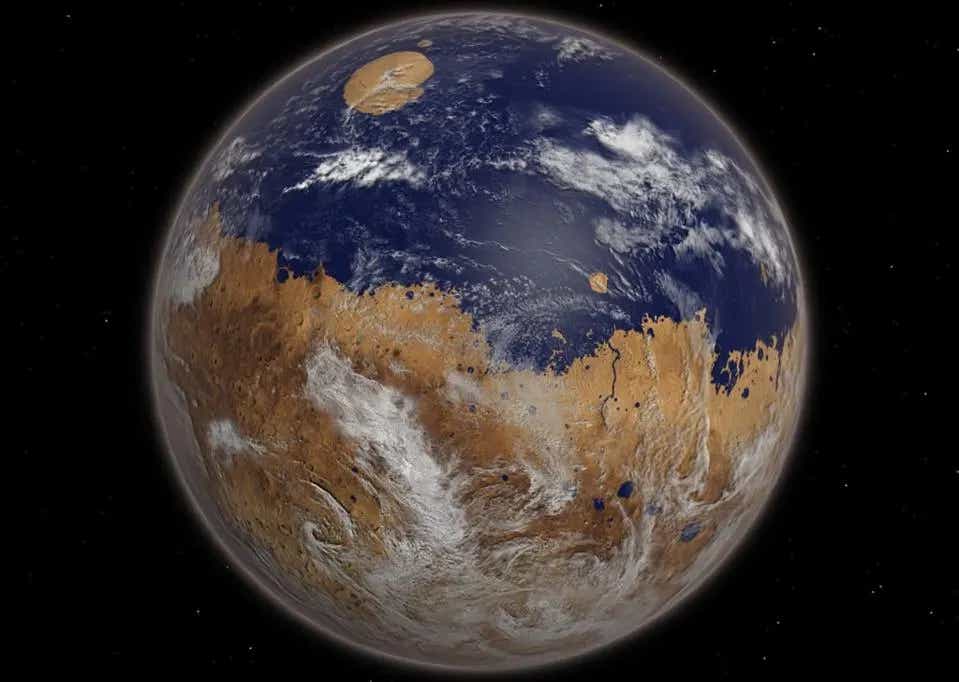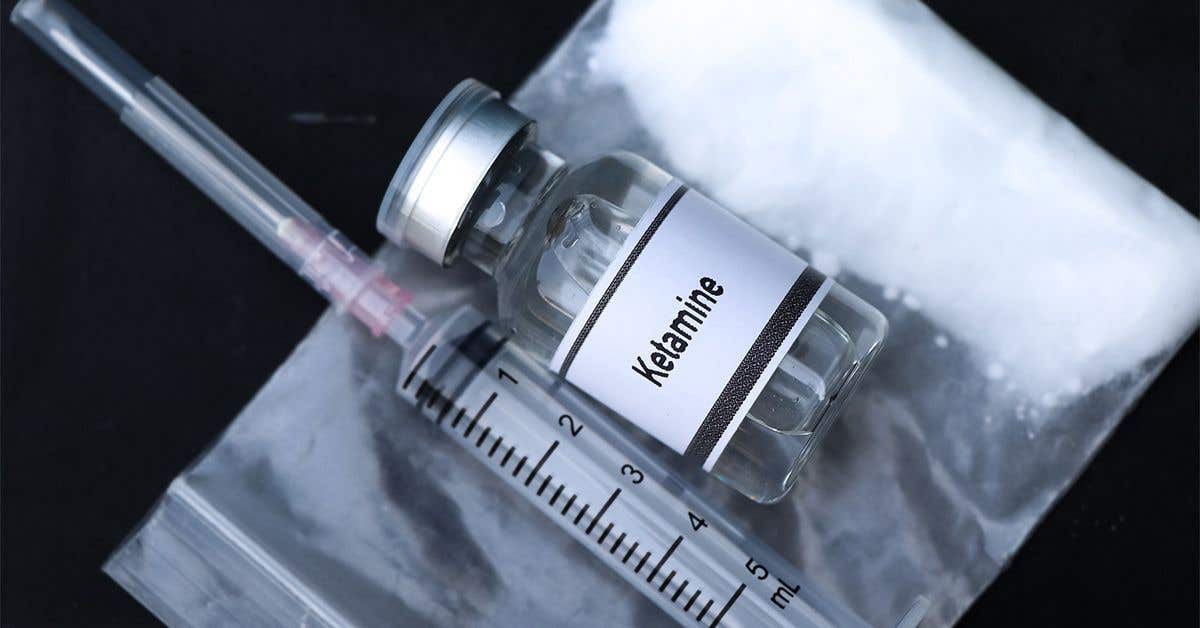Scientists develop plan to warm Mars to temperatures suitable for life
Mars has long captivated human imagination, especially when it comes to making the cold and barren planet more hospitable to life.

The idea of transforming Mars into a place where life could thrive has inspired numerous scientific and speculative proposals. (CREDIT: Kevin M. Gill / flickr)
Mars has long captivated human imagination, especially when it comes to making the cold and barren planet more hospitable to life. The idea of transforming Mars into a place where life could thrive has inspired numerous scientific and speculative proposals.
A new study, published in Science Advances by researchers from the University of Chicago, Northwestern University, and the University of Central Florida, introduces a novel and promising approach to warming the Red Planet.
This method, which involves releasing engineered dust particles into Mars' atmosphere, could potentially increase temperatures by more than 50 degrees Fahrenheit—a crucial step toward making Mars habitable for microbial life.
The significance of this method lies in its efficiency. It is reported to be over 5,000 times more effective than previous efforts to globally warm Mars, marking a substantial advancement in the field of planetary engineering.
What makes this approach particularly compelling is its reliance on materials that are already abundant on Mars, which makes it much more practical compared to earlier ideas that required importing resources from Earth or extracting rare Martian elements.
“This suggests that the barrier to warming Mars to allow liquid water is not as high as previously thought,” noted Edwin Kite, an associate professor of geophysical sciences at the University of Chicago and one of the study's leading authors. Samaneh Ansari, a graduate student at Northwestern University and the study's lead author, worked under the guidance of Professor Hooman Mohseni.
While the study's proposal marks a significant step forward, it's important to recognize that making Mars suitable for human life remains a distant goal. The planet’s atmosphere is still too thin for humans to breathe, and creating conditions where people can walk on Mars' surface unaided will require extensive additional work.
Related Stories
However, this research could lay the groundwork for a future where Mars is capable of supporting life forms such as microbes and food crops. These organisms could gradually increase the oxygen levels in the Martian atmosphere, much like the way life on Earth has shaped our planet's environment over geological time.
The dream of making Mars habitable is not new. Over the years, various scientists, including the famous Carl Sagan, have proposed methods to achieve this goal. These ideas have ranged from the fantastical—like turning one of Mars’ moons into a second sun—to more scientifically grounded proposals, such as the use of transparent gel tiles to trap heat.
However, the biggest challenge has always been Mars' extremely low temperatures, which average around -80 degrees Fahrenheit. Any realistic plan to make Mars more welcoming must first address this significant obstacle.
One way to tackle this problem is by enhancing Mars' natural greenhouse effect, a process that could trap more solar heat at the planet’s surface. However, previous plans required enormous quantities of materials, often relying on gases transported from Earth or mined from Mars, which are neither abundant nor easy to access.
The new study, however, takes a different approach by using materials that are already present on Mars. This innovative idea leverages the iron and aluminum-rich dust that covers the Martian surface—dust that rovers like Curiosity have already analyzed.
On its own, Martian dust does not have the right properties to warm the planet; in fact, it tends to have a cooling effect. However, the research team hypothesized that by altering the shape and composition of these dust particles, they could be engineered to trap heat more effectively.
The team designed particles shaped like tiny rods, similar in size to commercial glitter, which are intended to trap escaping heat and redirect sunlight back to the planet’s surface, thus boosting the greenhouse effect.
“How light interacts with sub-wavelength objects is fascinating. Importantly, engineering nanoparticles can lead to optical effects that far exceed what is conventionally expected from such small particles,” said Ansari. Mohseni, a co-author, added that they have just begun to explore the possibilities: “We believe it is possible to design nanoparticles with higher efficiency, and even those that can dynamically change their optical properties.”
Despite the promising results, this approach still requires millions of tons of these engineered particles to achieve the desired warming effect. However, this is a dramatic reduction from the quantities needed in previous proposals, making the project significantly more feasible.
Kite emphasized this point, noting, “You'd still need millions of tons to warm the planet, but that’s five thousand times less than you would need with previous proposals to globally warm Mars.”
Calculations from the study suggest that releasing these particles into Mars’ atmosphere at a rate of 30 liters per second could raise the planet’s temperature by over 50 degrees Fahrenheit. Remarkably, the researchers believe that this warming effect could become noticeable within just a few months. Additionally, the process is reversible; if the particle release were halted, the warming would dissipate within a few years.
However, many questions remain unanswered. For instance, scientists are unsure how quickly the engineered dust would cycle out of Mars’ atmosphere. Mars has water and clouds, and as the planet warms, it's possible that water could begin to condense around the particles, eventually falling back to the surface as rain.
“Climate feedbacks are really difficult to model accurately,” Kite warned. “To implement something like this, we would need more data from both Mars and Earth, and we'd need to proceed slowly and reversibly to ensure the effects work as intended.”
While this research represents a significant leap forward in the quest to terraform Mars, the authors stress that their focus is on warming the planet to support microbial life and possibly agriculture—not on creating an environment where humans can breathe unaided.
“This research opens new avenues for exploration and potentially brings us one step closer to the long-held dream of establishing a sustainable human presence on Mars,” Kite stated.
The study also highlights the collaborative efforts behind this research, with contributions from Ramses Ramirez of the University of Central Florida and Liam Steele, a former postdoctoral researcher at UChicago, now with the European Center for Medium-Range Weather Forecasts. The team utilized the Quest high-performance computing facility at Northwestern and the University of Chicago Research Computing Center to conduct their work.
While there is still much to learn and develop, this innovative approach to warming Mars could pave the way for future endeavors aimed at making the planet more hospitable to life. As research continues, the dream of one day establishing a human presence on Mars moves closer to reality.
Note: Materials provided above by The Brighter Side of News. Content may be edited for style and length.
Like these kind of feel good stories? Get The Brighter Side of News' newsletter.
Rebecca Shavit
Science & Technology Journalist | Innovation Storyteller
Based in Los Angeles, Rebecca Shavit is a dedicated science and technology journalist who writes for The Brighter Side of News, an online publication committed to highlighting positive and transformative stories from around the world. With a passion for uncovering groundbreaking discoveries and innovations, she brings to light the scientific advancements shaping a better future. Her reporting spans a wide range of topics, from cutting-edge medical breakthroughs and artificial intelligence to green technology and space exploration. With a keen ability to translate complex concepts into engaging and accessible stories, she makes science and innovation relatable to a broad audience.



